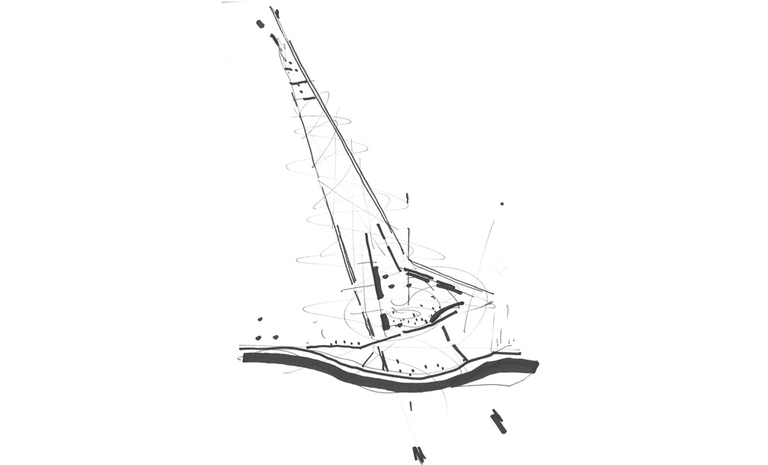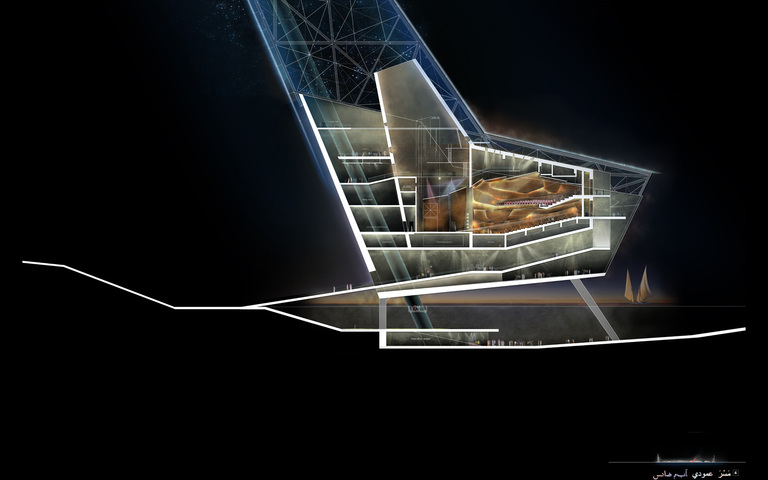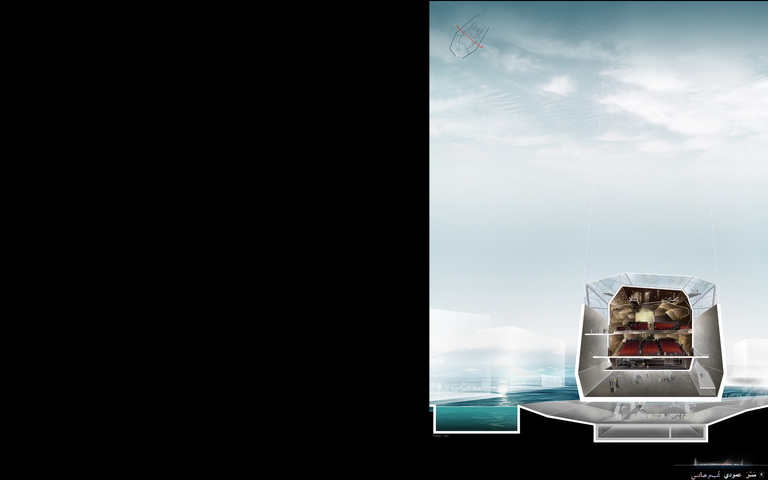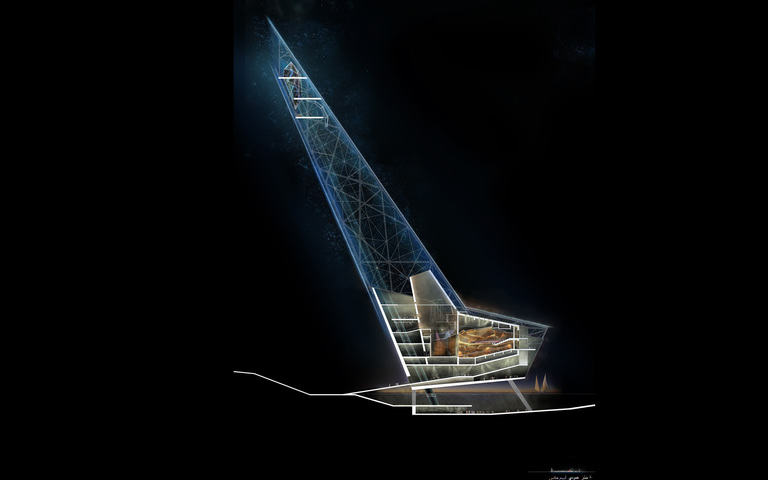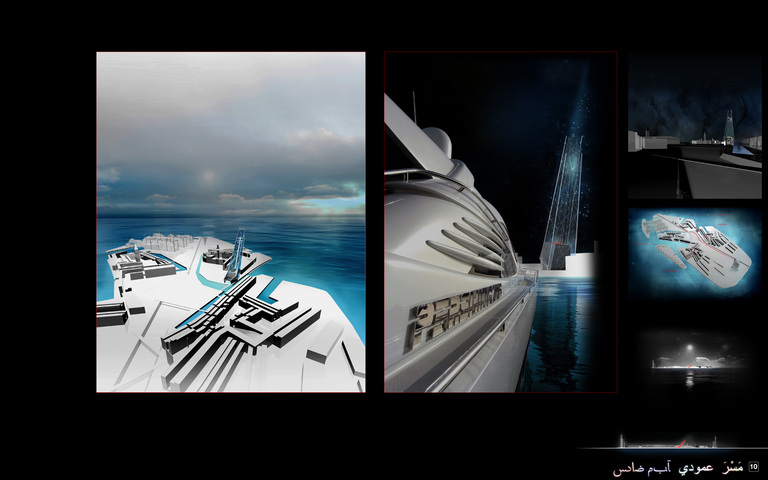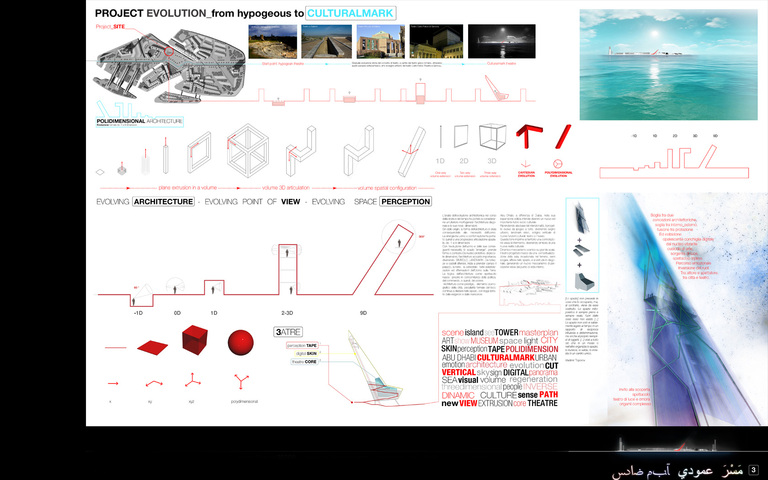vertical theatre
Abu Dhabi (UAE), 2010.
Abu Dhabi, a differenza di Dubai, nella sua espansione edilizia intende divenire un nuovo ed importante fulcro socio culturale.
Riprendendo alla base tali intenzionalità, il progetto intende porsi come segno urbano culturale, landmark visivo, scrigno verticale di nuove funzioni qualitative: teatro e museo.
Questa torre imprime al territorio una connotazione visiva di riferimento, divenendo simbolo di una nuova realtà culturale.
Dinamico meccanismo scenico su grande scala, il teatro progettato nasce da una concettualizzazione della sala, incastonata nel terreno, semi ipogea, affiora nello spazio, e si estrude in diagonale, generando un nuovo meccanismo di percezione visiva dal punto di vista interno.
L'analisi dell'evoluzione architettonica nel corso della storia ha portato a considerarne la sua morfogenesi in nove dimensioni: sin dalle origini la forma dell'architettura è stat consequenziale alle necessità dell'uomo.
La sinergia tra l'uomo e le sue necessità ha portato a una progressiva articolazione spaziale, da -1 a 9 dimensioni, da spazio ipogeo protettivo a urban landmark, a elemento scenografico e culturale.
Il teatro così assume l'importanza duplice di meccanismoscenico, sia sulla grande scala urbana che sulla piccola scala del palco teatrale.
Il concetto di teatralità si configura quindi come percorso percettivo di risalita all'interno della torre avvolgendosi intorno al nucleo interno del teatro stesso, e anche attraverso il suo rivestimento digitale esterno, proiettato verso la città.
______________________________________
Abu Dhabi (UAE), 2010.
Abu Dhabi, unlike Dubai, in its building expansion intends to become a new and important socio-cultural hub.
Taking up these intentions at the base, the project intends to act as a cultural urban sign, a visual landmark, a vertical casket of new qualitative functions: theater and museum.
This tower gives the territory a visual connotation of reference, becoming a symbol of a new cultural reality.
Dynamic scenic mechanism on a large scale, the designed theater arises from a conceptualization of the hall, set in the ground, semi-underground, emerges in space, and extrudes diagonally, generating a new mechanism of visual perception from an internal point of view.
The analysis of architectural evolution throughout history has led us to consider its morphogenesis in nine dimensions: since its origins, the form of architecture has been consequential to man's needs.
The synergy between man and his needs has led to a progressive spatial articulation, from -1 to 9 dimensions, from a protective underground space to an urban landmark, to a scenographic and cultural element.
The theater thus takes on the dual importance of a scenic mechanism, both on the large urban scale and on the small scale of the theater stage.
The concept of theatricality is therefore configured as a perceptive path ascending inside the tower by winding itself around the inner core of the theater itself, and also through its external digital cladding, projected towards the city.
